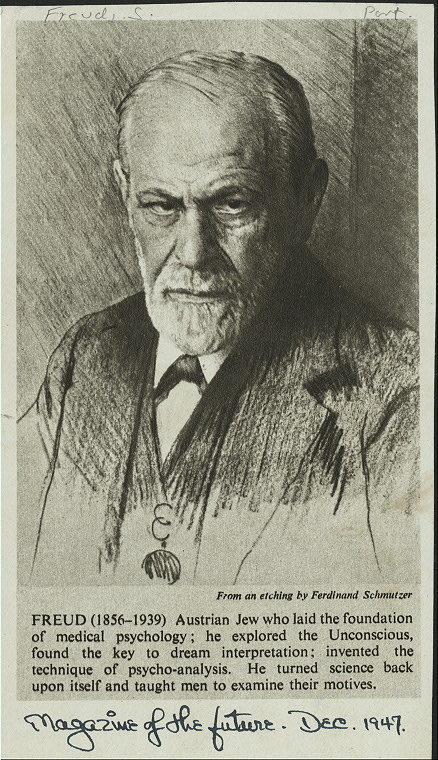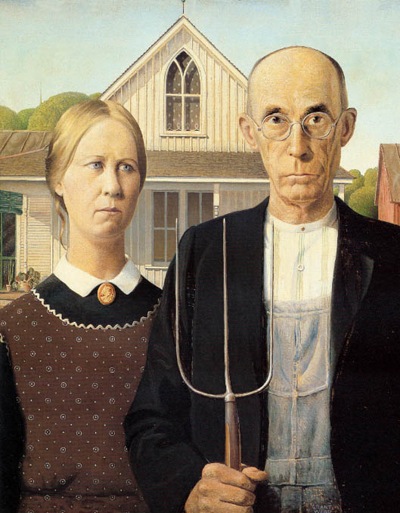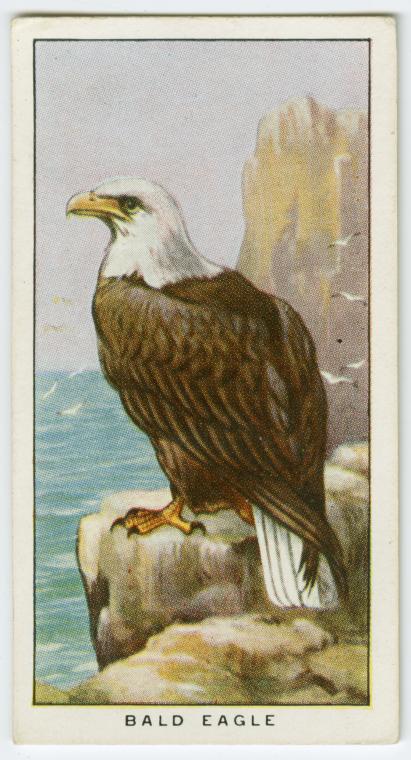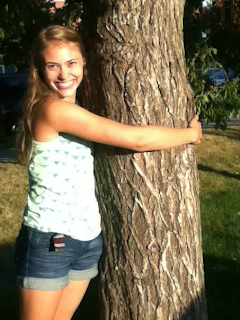Friday, December 6, 2013
Technical Malfunctions
An apology to anyone who came here looking for the blog list the past few days! I just checked my blog today and saw that my list was apparently also messed up. I don't know what the deal was, but it should be fixed now :)
Sunday, December 1, 2013
That, Anyway, is What I Have Learned
I decided to take LIT 285 on the recommendation of my sister. Dr. Sexson was one of her favorite professors. I wouldn’t normally take a literature class by choice, but I thought stretching myself would be a good experience.And it has been. I have enjoyed this class immensely and gained a whole new set of perspectives.
At
first I was hesitant about blogging. It wasn’t something I had ever done
before. At least not that I can remember. I bet it’s somewhere in that great collective
unconscious. My reservations about blogging were, however, unfounded because in
blogging I could freely express myself and my thoughts about this class.
These
speeches we have had to give were also something I felt uncertain about.
Thankfully, the class turned out to be a great audience and the speeches have
been fun. We got to hear all kinds of wild creation stories. I learned more
about pain and circumcision than I ever wanted to know. The displacements were
creative and entertaining. Together, we shared stories.
Coming
into this class, I knew very little about mythology. Most of these stories have
been entirely new to me. I didn’t know about Zeus and Io or any of his other
lady “friends”, Hades and Persephone, Daphne and Apollo, Actaeon, or the
Maenads. It has been really fascinating
learning the myths, the precedents.
My
interest was grabbed by the stories relating to the Trojan War, Leda and the
Swan, the birth of Helen. I am reading the Iliad for another class and with all
the complexities of that story, which is another I had never heard before, I
was happy to learn as much as I could. I also recently read about the Freudian
concept of the “Oedipus complex” in my psychology textbook and thanks to this
class, I knew what that was referring to. It made me happy.
I
jumped right into reading Calasso and the vast wealth of tales was
overwhelming. So many versions of the same story. It was this way. Or perhaps
that way. Either way, we don’t know. This irritates me. Which one is the true
story? As frustrating as it has been, I’ve had to accept the uncertainty of so
many variations and perhaps I have even learned to accept them as part of the storytelling
experience.
The
behavior and attitudes of the gods in Calasso shocked me. They were petty and
cruel and careless. Rape was the most common theme in the tales about them.
This god wanted this lady more than anything
else, he couldn’t be without her. So he chased her down. And a mere ten pages
later it’s a new lady he also “couldn’t live without”.
Many
suffered with the reckless and self-serving attitudes of the gods. In fact the people
realized that, as was quoted in class, “Whenever their lives were set aflame,
through desire or suffering or even reflection (they) knew that a god was at
work.” They accepted their lot with all its pain “so that bards would have
something to sing about.” They knew, as Dr. Sexson said, “the only life that is
ever worth living is shot through with pain.” If there’s no pain, no suffering,
what story is there to tell?
Another
thing from this class that has stuck with me, is the repetition of myth. We have
seen the same stories repeated throughout history, over and over. I even saw
some of this in the picture I posted to my blog. My own unintended
unoriginality. If we step back and look at the ordinary, even there we can find
beauty and rhyme. As Dr. Sexson said, “reality is mythology.” Even our little,
boring lives, rife with trivialities and Uncle John moments tell stories. Dr.
Sexson also pointed out, you can indeed find Oz in Bozeman. You simply have to
be looking for it. This class has certainly taught me how to look. It was
predicted "By the end of this semester you won't be able to walk out the
door without stepping on a myth." And it’s true. When I walk out to door,
I shall find a myth. That, anyway, is what I have learned.
Sunday, November 17, 2013
Henry and Diana
Henry and Diana walked down
the sidewalk holding hands. They were newly married and madly in love. Their
romance had been a whirlwind; they’d known each other for just four months. As
they walked, they hardly looked where they were going, instead spending most of
the time gazing in each other’s eyes and smiling. They were on their way to the
airport for their honeymoon. Henry hailed a cab and as the car pulled to the
cub, he opened the door for Diana. “My lady.” he said, gesturing. Diana smiled
and climbed in. “Thank you, sir.” The first thing Diana saw in the cab was the
arm of the driver resting on the back of the seat in front of her wearing a
beautiful watch with a crystal face and sleek, black rubber band. The cabby
turned to her presumably to ask the destination, but this was cut short when
their eyes met. The way the man looked at her made Diana instantly chilled.
In this brief time
Henry was stowing their luggage in the trunk. As he went around the car to
climb in, the cabby launched himself into the back seat and assaulted Diana,
grabbing at her and pulling at her clothes. Diana struggled against the man,
crying out for help. Henry went mad with rage. He yanked the car door open and
began to beat the cabby. Henry pulled him out of the car, fist meeting face in
carnal rage. The cabby tried to shield himself, but Henry was too quick. Diana
sat stunned as he beat the man over and over until he was a limp, bloody mess.
Henry let the man go and he slumped to the ground. He stared at the cabby,
breathing heavy. Diana glanced at the floor of the car. The cabby’s handsome
watch was laying there. She picked it up to examine its elegant face. On
impulse, Diana slipped the watch into her purse. “We should get a different
cab.” Henry stated. Diana nodded and climbed out of the cab. Henry gathered
their luggage and they continued on their way, both stunned, saying nothing.
A year later and Henry had
cheated on Diana several times. Desperate to draw him back, Diana decided to
give him the finest gift she could think of. Henry came home from work on the
night of their anniversary and she handed him a small box with a bow around it.
He opened the box to find a beautiful watch with crystal face and a black
rubber band. Henry was stunned by the gift. “Babe, this is gorgeous. Where did
you get it?” Diana just smiled and said, “Try it on.” Henry slipped on the
watch and admired it. He leaned in to kiss his wife, but as he did, his throat constricted.
He gasped for air and just like that he collapsed on the floor. Diana was
horrified. She called 911, but the ambulance didn’t make it in time. Diana
didn’t know Henry was allergic to latex and that lovely watch with its smooth
rubber band had been the death of him.
As you may have
guessed, this is a displacement of the story of Nessus, Heracles, and Deianira.
The things that may have tipped you off were the names, the “transporter”
attempting to rape the new bride, and the wife’s inadvertent killing of her
husband, mixed with that element of revenge from the grave.
Monday, October 28, 2013
Mascarita and Heisenberg
In Mario Vargas Llosa’s The
Storyteller I was surprised by the sheer number of characters named
Tasurinchi. Even to the end, I continued to be flabbergasted at the
introduction of yet another Tasurinchi. At least, I think it was another. But
then, how can I ever be sure? They’re all Tasurinchi’s, after all. The number
was simply confusing. It seems the Machiguengas already knew what we have
learned—that there is nothing new. “History marches neither forward nor
backward: it goes around and around in circles, repeats itself.” (p.240) They get
out ahead of the game in their naming, forgoing to ruse of originality.
Another thing I found interesting was the different versions
of stories Mascarita would tell. “That’s how it’s come about, it seems.”
(p.127) and then another version and “That’s how after began, perhaps.” (p.129)
Just like Calasso tells different versions, so does Mascarita, as Scott talked
about in his blog. I would like to draw another parallel as well. I recently
read the play Copenhagen by Michael
Frayn for another class. The storyline is scientists Niels Bohr and Werner Heisenberg
posthumously attempting to determine the exact events of a night in 1941 in the
middle of WWII. Memory has long since clouded and version after version is
proposed, with no definitive ever found. An echo is felt here, as it is in much
of life.
Another comparison to Copenhagen
is that Mascarita doesn’t seem to know why he is drawn to the Machiguengas. No concrete
explanation can be articulated. Similarly Heisenberg does not know why he came
to visit Bohr on that fateful night. “The sort of decision arrived at by saints
and madmen is not revealed to others. It is foraged little by little, in the
folds of the spirit, tangential to reason, shielded from indiscreet eyes, not
seeking the approval of others—who would never grant it—until it is at the last
put into practice.” (p.34) Why did one German scientist and one red-headed
Peruvian Jew choose to do the things they did? We don’t know, we can only
speculate.
Wednesday, October 23, 2013
My American Gothic
After our discussion last Thursday of the painting American Gothic and it's mythological ramifications, I simply had to post this picture of me and my friend Caleb.
Its not a perfect reenactment and the similarities were entirely unintentional, but I've always hated the picture because it reminded me of the painting. Dull, sort of listless. There it is though, mythology repeating itself in my life.
Mardudjara Aborigine Male Initiation Ritual
Imagine a boy who is a member of the Mardudjara aborigine
tribe of Australia. It is time for him to become a man. The first rite of passage he must endure is
nasal septum piercing. Two elders of his tribe hold a spear and bird wing bone
to either side of his septum. A hole is carved with the spear and the bone is
pushed through his nose.
Sometime later, the boy is taken on a journey with many
members of his tribe. There is great ceremony and the performance of many
rituals with wailing, singing, and dancing. At the end of traveling he is
surrounded by a group of men and made to lay down by a fire. He will now be
circumcised. One specially chosen man sits on his chest, pulls up his foreskin
and twists it. Another holds his head and gives him a boomerang to bite. Two
other men then take turns cutting away his foreskin while he remains motionless.
Once they are finished, the boy is lead to a small fire and made to kneel on a
shield over the smoke. He is then given a piece of “good meat” and told to eat
it without swallowing. Once he does this, he is told he has eaten his own boy, his
foreskin. When the rite is over, the boy is considered ceremonially dead and
must remain in seclusion without talking until he is healed. After this time he returns to society reborn,
a man. But there is one more thing he must endure.
He is seized one day without warning and again brought into
a group of men. There is more ceremony. He is again made to lie down. Elders
gather around him and one gives him a boomerang to bite. He is going to be
subincised. Two men are chosen to perform the task. One sits on his chest and
holds his penis, the other puts a wooden rod in his urethra and then slices
through to the rod until the underside of his penis is cut open. After this operation is finished, he is
brought to another fire and made to stand over it so the smoke can cleanse his
wound. He is now a man and may participate in the sacred tribal rites.
Monday, September 30, 2013
Nemesis
nem·e·sis
/ˈneməsis/
noun
1.
the inescapable agent of someone's or
something's downfall.
a long-standing rival;
an archenemy.
retributive justice.
Roberto Calasso’s The Marriage of Cadmus and Harmony tells many stories about Zeus
and his conquests of women. On page 125 we find a twist in that story. Zeus’
eye is caught by an extraordinary woman, an immortal woman. What sort of
immortal she is isn’t clear, possibly she is a daughter of Kronos. All we know
is that she belongs to a group of women who embody necessity and “hail from a
distant past when the only powers that existed were abstract and faceless…” She
is Nemesis.
These women of necessity are said to be extraordinary,
otherworldly creatures. Nemesis had “a body that was both stable and very
beautiful…rich, thick hair, white clothes.” She is the expression of the
effects of causing offense. Her name would later “be translated as Vengeance…”
Calasso says that “Zeus found mortal women more
attractive.” Why this woman broke the mold, we don’t know, but it is clear that
“with Nemesis it was different.” Zeus begins to watch her, obsessed. Nemesis
ran and he followed her all over the earth, pursuing her relentlessly. “Never,
for a woman, had Zeus traveled so far…” Ending the chase, the god catches this
supernatural woman and unites himself with her out of what is said to be
“powerful necessity.” Nemesis, woman of necessity, is overtaken by necessity
and Zeus falls prey to the desire for a woman, powerful in herself, breaking from his inclination toward mortal women who are frozen by his power. He pursued her with more zeal than he had any other woman, crazed by passion.
Thus, the god’s
nemesis is Nemesis herself.
Monday, September 23, 2013
Telling My Story
Unfortunately, I didn't have any children with which to share my creation myth. But my friend volunteered to listen and even pretend to be a kid! He did interrupt a few times to ask questions, but his facial expressions were fantastic.
Wednesday, September 18, 2013
How the World Was Made
There is water. Water everywhere. In the water stands a tall
stick. On its top an eagle’s nest. The eagle shares his home with a wolf, a
coyote, a panther, a prairie falcon, a hawk, and a condor. When the animals
look out of their nest, the only thing they can see is water. Water everywhere.
Sequestered up in the tower, the eagle felt cramped. He
begrudged sharing his home. The coyote had too many fleas, the condor was loud
and obnoxious, and the panther was just too big for the nest. Something had to
be done. But where else could they go? There was only water everywhere.
One morning, the eagle was struck by an idea. They would
create land. He called over his neighbor, a duck. This duck wasn’t the
brightest. The eagle told the duck he could have a special prize if he would
dive down under the sea and bring back some earth. The duck eagerly dove into
the water, but the journey was too much for him and he died before reaching his
goal.
The eagle decided to cash in a favor. His other duck neighbor
owed him one. The eagle sent this duck off on the same perilous expedition. He
was much stronger and reached the bottom! But as soon as he did, his strength
gave way and he too perished.
The eagle was saddened. He had no more duck neighbors to
send to their deaths. Fortunately, the body of the second duck rose out of the
water with dirt on his foot. The eagle quickly collected the dirt and put his
genius plan in motion, making a mixture and placing it in the water.
All day the animals watched. Nothing. Still water
everywhere. Suddenly, the stuff exploded over the water, covering it. The eagle
wanted to be rid of his unwanted guests right then and there, but they were
wary of this new land. The eagle sighed under his breath and agreed to wait for
the land to be tested.
The eagle told the other animals to go down and bring back
some dirt. Then they slept. In the morning, the eagle told the wolf to shout.
The wolf shouted and the earth fell away! Again, there was water everywhere.
Disappointed but not deterred, the eagle took the pieces of earth from the nest
and repeated his same process. Things happened just as before, first nothing, then
earth spread over everything and they went to bed.
The next morning, the eagle told the wolf to shout again. He
did it three times. The earth shook, but it remained. The coyote shouted too, his
loudest cry and the earth shook only a little.
The eagle was very pleased. Near his home there had formed a
lake. He led all the animals out of the nest to the lake and proclaimed it
their new home.
Monday, September 9, 2013
Psychosexual Theory
 |
| Sigmund Freud |
In another of my classes, I just learned about theories of
human development. One of those theories is that of Sigmund Freud. Freud
believed that throughout our lives we are always driven by sexual desires. In
Calasso, it seems that every story about a god has been the conquest of a
woman. These gods are given entirely to gratifying their sexual impulses. We
read about rape after rape after rape, each god lusting after every beautiful
women they see. The carnality of the gods is a level I would call psycho-sexual.
While I don’t really agree with Freud’s theory for humans, it definitely seems it could be applied to gods of Calasso or mythology as a whole.
Wednesday, September 4, 2013
My Tree
This is my tree and me. I picked the particular tree after
some debate because I could wrap my arms around this tree in a big bear hug. I
like hugs quite a bit. Real hugs, like bear hugs. None of that awkward side grabbing stuff. Since beginning my college experience I've
had very few hugs. I figure the tree doesn't get very many hugs either, so we
could both get some benefit.
A big bear hug also seems like it would establish a better connection
between me and the tree. More of a connection to the environment. I’ll admit, I
didn't spend enough time hugging my tree to hear any stories from it. But there
is stories to be found everywhere. If you talk to someone and actually listen
to what they say, chances are you will hear a story. Every melody sings of emotion.
The constellations of the night sky hint of mythical characters from ages past.
The life of every animal, no matter how mundane, is a ballad. There’s a tale behind
every feature of the landscape. The lawns of campus tell the story of thousands
of footsteps.
I’m sure my tree has a story. It was probably planted quite a while ago, maybe even before my parents walked this very campus. It has been the silent witness of many things; crimes, romances, the laughter among friends. It’s probably even been hugged before, once upon a time.
But this time there’s proof.
Sunday, September 1, 2013
Versions of the Story
How many times have we been told to hear the other side of
the story? To not jump to conclusions until we have heard all the versions and
gathered all the possible facts? How many times as children did we get in
trouble and when it came time to give an account, all parties were asked to
tell their stories? Many times, I would guess.
The problem arises though, that when we listen to all stories
we are left with so many versions. How can we possibly know which really
happened or if any of it really happened at all? Does it matter if we find out
which is true?
In the opening chapter of The Marriage of Cadmus and Harmony we are presented with many
different versions of the story of Europa and Zues. These variations probably
come from the inaccuracy of oral tradition. Every time a story is retold, details can be lost or added due to the fallibility of the teller’s memory.
We were asked in our last class to try to recall our
earliest memory. I have had difficulty with this, as I have many possible
memories and very little idea of their relative time. I have also heard many
stories of my early childhood, and now find it difficult to determine which of
the images in my head have been imagined to fit a particular story and which are
real memories. I may have a few scattered recollections of my family’s move to
my childhood home when I was two and these would probably be my earliest
memories. But I have also heard many stories about this time, and these
pictures could have come from them.
How can I really know? And does it matter? Regardless of where
these memories come from, they have become a part of who I am, my history.
"Only Memory Pictures"
There are many treasured pictures
hung on Memory’s wall,
are the fairest ones of all.
I can see the rustic cottage,
the fields of golden grain,
The mill and the old red schoolhouse
beside the shady lane;
I see the roses blooming
in fragrance by the door;
And the little blue-eyed baby
playing on the kitchen floor.
Only Memory’s pictures
that now I recall
From cherished scenes of gladness,
they come to bless us all.
Only the dreams of a childhood,
gone forever more,
of those happy days of yore!
I can see my loving mother
smiling on me there,
And the kindly face of father
as his goodnight kiss I share.
By the fireside with her knitting,
is grandma, bent and gray;
And hark! there’s the old clock ticking
the fleeting hours away.
Ah! these are childhood’s visions
that cheer the lonely heart;
Bringing Memory’s sweetest pictures,
that from life can ne’er depart.
Subscribe to:
Comments (Atom)


.JPG)






